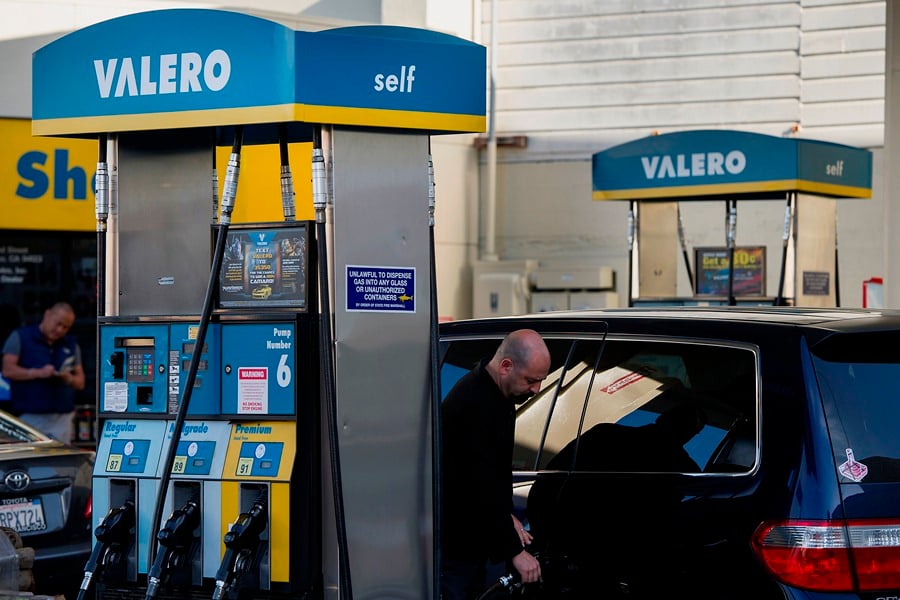Six months into an oil-price slide that seemingly nobody saw coming, debate is starting to build about
when and how to jump in and take advantage of the market's punishment on certain sectors linked to the commodity.
Some investors haven't waited.
“We bought exposure to oil in all our portfolios in late January when it was trading in the $40s, and our oil recovery portfolio of two ETFs and 10 oil stocks is up about 15% already, but it's still early,” said Leon LaBrecque, chief investment officer at wealth management firm LJPR.
The ETFs include the iShares U.S. Oil & Gas Exploration & Production ETF (IEO) and the SPDR S&P Oil & Gas Exploration & Production ETF (XOP) and some of the oil stocks are Anadarko Petroleum Corp. (APC), EOG Resources Inc. (EOG), Phillips 66 (PSX), and Williams Companies Inc. (WMB)
“If people were bullish on oil back when it was $100 a barrel, you've gotta be bullish when it's at $50,” he added. “It just seems logical that oil will be higher 16 months from now.”
Crude oil, which is currently trading at around $52 a barrel, began to slide in earnest last fall and has since forced an intense focus on the
fundamentals of supply and demand for the natural resource. Since the start of the year, it has averaged just over $48 a barrel. That compares to an average per-barrel price of $92.73 last year.
“I think we've seen a lot of positive sentiment about oil prices being higher a few years out, but there's probably further declines in oil, and therefore energy stocks, ahead,” said Rob Haworth, senior investment strategist at U.S. Bank Wealth Management.
He cites prices in the futures markets, which get higher as the futures contracts get further out in time, as a contrarian indicator for the near term price of oil.
“The futures markets remain fairly net long, with regard to speculators, and typically with this kind of price drop, we will see net-long speculators decline,” he added. “This much positive sentiment suggests more downside for oil and oil-sector stocks.”
But Jay Hatfield, manager of the InfraCap MLP ETF (AMZA), takes an opposite view.
The near-month contracts are trading in virtual lockstep with the price of oil, but one year out (futures contracts for February 2016), the contracts are priced at nearly $61 a barrel, meaning investors are willing to take the bet that $61 will be a good price for oil in a year.
This so-called price contango, when futures contracts are higher than the spot, or cash, price, has been the case for the past few months. Before that, it was almost two years of backwardation, which is when expiring contracts trade higher than contracts dated to expire in the future.
“The futures indicate what we believe is true,” Mr. Hatfield said. “If oil went to $150 a barrel, people would change their use over time, but they wouldn't be able to dramatically cut consumption, and that's what the futures markets are anticipating right now.”
In essence, even if gasoline is cheaper than it has been in years, consumers operate in a relatively narrow band of how much they can and will use.
Mr. Hatfield is playing the oil market via oil storage companies such as Plains All American Pipeline LP (PAA), because “they can buy oil now, sell it forward using their storage capacity, and lock in some of the arbitrage.”
For Chris Beck, who manages more than $4.5 billion in small-cap value portfolio assets at Delaware Investments, the price drop has increased the challenge of allocating even 5% of his portfolios to the energy sector.
While he believes the price drop for oil might have “overshot on the downside,” he also doesn't believe $100 for a barrel of oil was a sustainable level, either.
“Make no mistake, the outlook [for domestic drillers] is bad for the next several months,” he said. “I tend to think there will be a bigger reaction later in the year in terms of declining production growth, because I find it very difficult to believe you can have the rig count decline as quickly as it has happened over the past six weeks and not have it have an impact on production.”
The production decline, he explained, will be part of what slowly gets oil prices back to the "comfort level of between $60 and $75 a barrel.”
“The companies won't be making as much as they were six months ago,” he added. “But they'll be making more than they are now.”







